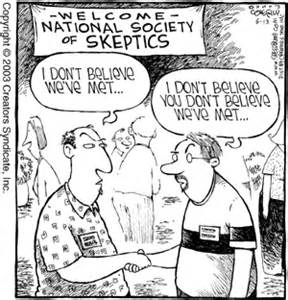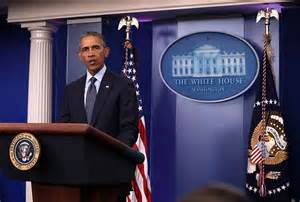Analyst Essay Topic – My Response To Monash Report
By Francesca Vaccaro
In the report Newbrook & Curtain (2001) challenge David Oates’ theory of Reverse Speech (RS). The authors immediately contend that Oates’ definitions of both genuine and coincidental reversals are the same simply because it is stated that both are built upon phonetic structures. This is however a misinterpretation: what Oates probably meant is that both are built upon phonetics. Nevertheless how/where FS and RS originate and how they are processed delineates a very different picture: how the brain can process the two forms of communication (forward and backward) so differently, on such a variety of levels, simultaneously and in direct relation with each other, constitutes a huge difference in definition. The authors of the Monash Report fail to understand the importance of the electroencephalogram testing conducted by Oates and Tomlian in 1988. These tests proved that Forward and Reverse Speech stem, respectively, from the left and the right brain. Therefore the phonetics that we produce are processed under a completely different set of cognitive templates, with RS being regulated through the emotional literacy of the subconscious and other layers rather than left brain logic. These tests provide a huge step forward in the study of Reverse Speech because they give scope for scientific research. They can be reproduced under the same conditions or under modified variables that may account for extraneous factors such as researcher bias or different population samples. The study revealed something quite astonishing in that Reverse Speech not only outlines deeper truths about the self or higher knowledge held by the speaker, but it also affects cognitive functions in unaware listeners. This has huge repercussions in understanding the potential impact of public talks, music and the like. Unfortunately, the authors of the Monash report did not pick up on the importance of this data. Their whole report seems to use left brain thinking as a frame of reference throughout, in their attempt to assess right brain processes. Their comparative study looks at conscious retrieval of backward messages, but this involves only a segment of the process of RS. If their aim is truly to verify the existence of RS they should pay closer attention to brain activity. In the study by Oates brain activity shows in pictures exactly what the left or right brains pick up and what functions operate during speech. The importance of this particular study is that it does not just show conscious activity but rather what we may not be aware that has been activated, therefore providing photographic evidence of information processing at various levels of consciousness.
Moreover, there is a contention in the report that because spoken language is purely grounded on phonetics reversals will always be the same for the same forward sentence regardless of who speaks it. Again this assumption is based purely on the conscious activities of the brain and it completely disregards the complex cognitive processing behind it. Nonetheless, in their argument, some allowance is given for minor variation due to accent, but again the authors state that this is negligible.
Even so, looking at the evidence of actual reversals can present a very different picture. To give an example, when I first started practising Reverse Speech I found a reversal which could have, though only at a glance, supported the authors’ assumptions. The forward word is relationship and the reversal that is usually found is ‘something shallow’. Now this is recognised by Oates as a universal reversal and is usually dismissed as coincidental due to the phonetic structure. However if one tried to read the word backwards phonetically the word would be spihsnoitaler. How can so many different people reverse ‘relationship’ into a whole different phrase, and in fact the same different phrase, from the one word? There is also a second spoiler because I was the person who mentioned the word ‘relationship’ in the recording, and in my case found it not to reverse as ‘something shallow’, but rather ‘the fears’. At the cost of giving away personal information, this is exactly how I feel about people who become ‘too close for comfort’. Findings such as this are in clear contradiction to the authors’ statements around the impossibility of different reversals being found for same-phonetic forward sentences.
Other examples extracted from David Oates’ (2016) own website include:
Oprah Winfrey
Oprah – “That is my religion. I know that what I’m thinking and [therefore going] to act on is going to come back to me in a circular motion.” – And I’m afraid.
President Obama
President – “..so this is a sobering reminder that attacks on any Americans, [regardless of race, ethnicity, religion]…” – Your villain hear the sender, sell the survivor.
Mark Zuckerberg
Mark – “We took a step back and I thought all right well our mission inst actually to get 1 in 7 people in the world to be connected, we want to connect everyone, so its a big issue that only around a [third of the people in the world] had access to the internet.” – Whirlwind, I’ll beat with that Earth.
Newbrook and Curtain (2001) consider the reversals ‘obscure’ but do not back up their claim other than by questioning the use of metaphors. There is much evidence in the literature to suggest that the subconscious speaks not through direct left-brain language but rather in pictures and archetypes (Brenner, 2013). In Brennan’s own words:
“What is so poignant here is that words are unnecessary to communicate or convey a message. The symbol, the representational picture or image, conveys the complete thought, concept, or ideal without the use of words to describe it; the proverbial, ‘a picture is worth a thousand words.’ This idea is tremendously powerful, for the way we “talk” to ourselves, our inner language, the way we know who we are, does not come from words, but rather from the timeless source within that knows who we are.”
Furthermore, Oates has devised a methodological framework for the retrieval and identification of reversals, to account for possible coincidental reversals and Researcher Effect (namely the potential interference of a researcher’s intention and beliefs). In the field of social research I have counteracted this through the Voice-centred approach (Mauthner and Doucet, 1998). In the area of Reverse Speech this method can be applied through the feedback of ‘fresh ears’ such as those of potential clients or fellow analysts. During the course this was very much the case, much to the frustration of those of us who had initially thought we’d found Kryptonite.
One aspect of retrieval that could be looked into for further investigation are individual abilities to hear different degrees of sound tone and pitch when these deviate from an average. Even though current applications presume that most genuine reversals can be heard by everyone, this may not be always the case. I only propose this as a basis for a new study which could prove or disprove my theory. David Oates particularly insists that reversals are disregarded when other interested parties cannot hear them, or when these do not fulfil a minimum standard, more so in relation to validity factors. This is an understandable measure to ensure the reliability of reversals in professional applications. My view however stems from Akiyama’s (2010) review of a new crime prevention strategy that has been the centre of some controversy: the Mosquito alarm. This alarm emits high pitch sounds that cannot be heard by adults over 25 years of age, but that can be unbearable to younger people. This alarm is meant to stop vandalism and other illicit activities commonly associated with young people. Despite my personal opinion on the prejudiced assumptions of this strategy, what I find interesting is the notion that human hearing can and does vary at least to some extent. Therefore more attention should be placed onto this issue.
Going back to the report, another claim by its authors is that ‘coherent’ speech cannot be generated backwards; yet empirical evidence proves otherwise as coherent reversals can be heard in much of the work by Oates and his students. Furthermore, if an accent alone can produce a variation in the backwards phonetics, isn’t it possible that our emotions or intent can affect how we talk forward which in turn can produce reversals true to our inner and deeper states? As far as I know Oates has never said that now the research can stop because we know everything about the existence of RS and of how backward language is processed. Instead, he has simply confirmed that RS does occur, and that it seems to originate in the right brain. If one wanted to elaborate on its occurrence they would most probably be encouraged to do so. Further claims that the frequency of the reversals is purely dependent on phonetics are yet again another reflection of the authors’ very much misunderstood nature of Reverse Speech.
Professional fields of study are also brought into the discussion to affirm that if there was such a thing as Reverse Speech, it would have been found by now. On the same token not long ago someone said to me that ‘there is nothing more to be discovered in science as no stone has been left unturned’. Faced with both these contentions I feel like Galileo Galilei when he first mentioned that the Earth is not at the centre of the universe: our discoveries evolve continuously and perhaps at some point scholars of existing disciplines will pick up and examine Reverse Speech. Lest not forget that the disciplines named here are embedded in western culture and follow the very left brain western pattern of thinking. I think of a vignette I saw not long ago where various animals including a monkey, a fish in a bowl, and an elephant, were told that the most intelligent would be the fastest one up a tree. On these lines, many will block out the possibility that emotional literacy and right brain thinking could possibly exist and that any form of communication can originate here. Others may be too afraid to propose such controversial subjects. Their focus will be limited to topics that enable them to maintain a ‘safe’ reputation and not lose status and credibility which would then impact their ability to practise. For instance Parapsychology is a very new field of study and research in this area is to this day only conducted in few and far between establishments, while being subjected to very strict standards. Going down this path isn’t a stroll in the park, that’s for certain. Linguistics is a field that personally fascinates me as I have often analysed language (long before coming across Reverse Speech) in my social research studies. Nevertheless the left-brain vs right-brain problem would be the same as for other areas of Psychology. One does not need to be an expert in Linguistics to find reversals or to prove their existence. Linguistics can only provide additional, albeit optional, understanding. Moreover one cannot apply the same criteria to both FS and RS as they are processed in a completely differently fashion.
Newbrook & Curtain (2001) proceed to say that if children develop Reverse Speech at an earlier stage than the forward, this in turn dismisses any existing understanding of child development. This seems quite a dramatic approach. Science has evolved in time through people gradually adding new discoveries and knowledge that step by step built new frameworks or adapted existing ones. Again the authors’ claim is very much based on child development in relation to left brain language rather than pondering on how the right brain can produce communication so soon before the left brain. Language is processed in two completely different brains so one should refrain from making sense of them from a left brain perspective alone.
Newbrook & Curtain (2001) designed a between-subjects study in order to compare the results across groups of participants. In the recruitment process the traits sought included: native English speakers and being unaware of RS. The results are not surprising, after all researcher-bias (the subtle influence of a researcher on the outcome of a study) is a common issue when conducting experimental research. Nevertheless this is by no means sufficient to erase the whole Reverse Speech theory as reversals were in fact, in a more or lesser measure, found by all 4 groups. If anything, the study explains why Oates is so strict in his standard and guidelines for RS identification. And the reason why Oates stated, as reported by the authors, that it takes time for students to learn how to identify reversals is not because they need to be brainwashed into believing that the exist, but rather the opposite: students must learn discernment so that they do not document misguided entries. As per group B in the study not providing the ‘correct’ responses, since they were told only to look out for the fake sentences they would have, justifiably, missed out on the actual reversals as their only attention was for the bogus sentences.
Overall the experiment was conducted scientifically but the findings, as always, are subject to interpretation. If Reverse Speech did not exist, the few correct reversals would not likely have been found by groups B, C or D. Furthermore, the possibility of other extraneous variables is not mentioned in the report. For instance, the level of hearing described above which could very much apply to individual responses in the study. Other tests into the background belief structure of the participants could have ensured a more miscellaneous grouping. The issue of how the authors managed to ensure that the participants were not aware of RS other than by asking them also poses the problem of whether the form of questioning and assessment could have had an influence on their performance.
I personally have not got the original study by Oates at hand just as the authors haven’t. I am sure that this could provide invaluable data along with perhaps room for improvement and good grounds overall for future research. His electroencephalogram study so far seem to have brought more realistic findings in that it eliminates the problem of conscious hearing and goes straight into what the left and right brains pick up. If anything, this is one study that I would be happy to recreate with some variables. On the whole one should also remember that Reverse Speech is still in its infancy compared to other social sciences. Therefore much more is yet to be discovered around it. Oates’ claims that RS can tap into higher realms of cosmic consciousness can be interpreted at discretion as one is free to speculate on the origins of such reversals. However a true scientist will admit that as much as they may not have tangible proof of a cosmic consciousness, they also have just as much lack of proof of the contrary. The applications of Reverse Speech in therapy aren’t necessarily harmful if the practitioner has a code of ethics. I cannot personally speak strictly for RS practitioners as I do not have that type of training yet. I am nonetheless a therapist in my own professional field and I believe that RS could help by triggering key elements in the therapy room. In this context clients are enabled to accept or reject the content of RS and it does not matter per se. What counts is that it opens up conversations making clients wonder about things that they may not have touched on before.
Last but not least, Newbrook & Curtain (2001) make some unfortunate remarks on Oates’ commercial practices. I agree that when seen in isolation the work may seem expensive. Nevertheless the authors should have invested some time to think beyond the one-hour session view to see the work behind it. If they had, they would have found the amount of effort that in reality goes into each session both during and after. The work does not stop at the hour but proceeds well into however long it takes to say ‘complete’. This could mean 3 or 4 hours of intense expert work and concentration (for an experienced RS practitioner like Mr Oates), not to mention the more immediate effects that can complete within a couple of sessions the work that in psychotherapy could (and often does) take a lifetime. Is this expertise not value for money in itself? If I compare Mr Oates’ charge of US$125 (= GBP £103.5 as per June 25, 2016) per session with the average range of fees in the London area I can immediately put things back in perspective. One should bear in mind that Oates’ fees may, if at all, be doubled where a second session is needed. However this would seal the work completely. When looking at psychoanalysis, one would have to multiply the fee per session over many weeks ahead. In the UK the Relate charity alone (a charity that provides family and relationship counselling) currently charges £60 per session for relationship counselling and £65 per session for sex therapy or family counselling. And Relate is a charity that is not for profit. The range of fees for private psychoanalysis is illustrated in the words of Christine Webber (2014) who rightly asks one to ponder over how much is our mental and emotional health worth to us:
“What can I expect private therapy to cost?
Fees for professional private therapy vary enormously.
In 2013, you’re unlikely to find anything costing less than £40 per hour, and you might encounter much larger fees. Top therapists in Harley Street tend to charge between £150 and £220 per hour.
Outside of the very expensive London areas – which encompass Harley Street, Devonshire Place, Cavendish Square and Wimpole Street – most people should be able to find therapy from a properly qualified practitioner from between at £50 to £80 per hour.
When you consider what people spend on other things that improve their wellbeing – like holidays, gym membership and eating out – this sort of figure, at least for short-term therapy, is not a huge expense.”
REFERENCES
Brenner, A. (2013) The Inner Language of the Subconscious: A Picture is Worth a Thousand Words, Sussex Publishers: https://www.psychologytoday.com/blog/in-flux/201301/the-inner-language-the-subconscious
Mauthner, N.S. and Doucet, A. (1998) Reflections on a Voice-Centred Relational Method of Data Analysis: Analysing Maternal and Domestic Voices, in: Jane Ribbens and Rosalind Edwards (eds.),Feminist Dilemmas in Qualitative Research: Private Lives and Public Texts, London: Sage: 119-144.
Newbrook, M. & Curtain, J. (2001) Monash University and Blind Testing: David Oates’ Theory of Reverse Speech, Australian Skeptics Inc.
Oates, D. (2016): www.reversespeech.com
Akiyama, M. (2010) Silent Alarm: the Mosquito youth deterrent and the politics of frequency, in: Canadian Journal of Communication, Vol 35 (3): 455-471.
Webber, C. (2014) How to choose a private therapist: find out how you should choose a private therapist, in: http://www.netdoctor.co.uk/conditions/depression/a650/how-to-choose-a-private-therapist
Disclaimer: This essay was prepared for an assignment in the Reverse Speech Analyst Course. Whilst all material was sourced from the public domain, credit is given to the authors of the original material. All errors, omissions and interpretations are that of the student.




